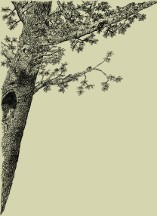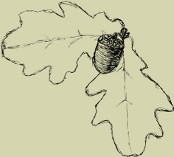42 41 40 39 38 37 36 35 34 33 32 31 30 29 28 27 26 25 24 23 22 21 20 19 18 17 16 15 14 13 12 11 10 9 8 7 6 5 4 3 2 1
Zeszyt 14 (1983)
Penetration of 24 chemical compounds into pine sapwood with 12, 28, and 50% moisture content, was examined. Wood samples were subjected to 30 min. long bath in 5% aqueous solutions of these compounds at the temperature of 20°C. Amounts of the solution absorbed were determined by weight, while amounts of ions — with the aid of analytical methods, using 1 mm thick wood layers cut from periphery of each saturated sample on three occasion, i.e.: directly after saturation, following to 28 days of seasoning, and after 56 days of seasoning under variable conditions.
Distribution of ions entering definite compound directly after saturation was similar (they differed insignificantly). In seasoned wood with 12% moisture content no significant differences in the distribution of compounds examined when compared to the status directly after saturation were found either. In seasoned wood with 28 and 50% moisture content there occurred a selective translocation of chemical compounds. At the same time for each ion different fixation of component of chemical compounds occurred in the seasoned wood. Chromium was fixed in wood at the highest rate and amount when compared to other elements.
The penetration of components of chemical compounds into wood in the course of saturation was of selective character. Elements of sodium, potassium, and chlorine penetrated the wood in greater amounts when compared to their perceptual proportion in the solution absorbed, while elements of copper, chromium and zinc — in lesser amount.
Results obtained provided the basis for the discussion on the mechanism of the penetration of fungicidal compounds into pine sapwood.
Examination of sorptive deformations in board structures formed by gluing of oak or beech mosaics with particle board, flaxboard, insulating board and made of bark board, when each surface of a board structure is exposed to air with different relative humidity (t = 20 ± 2°C):
a) on mosaic surface φ = 40 ± 2%, on material surface φ = 100 ± 2%,
b) on mosaic surface φ = 100 ± 2%, on material surface φ = 40 ± 2%.
Deformation of board structure was determined by: the course of alternations in board shape during examination, maximal deformation deflection, shape of the surface of the board deformed.
Results obtained permit the formulation of following conclusions:
1. Under the exposure to air with various humidity of each of the surfaces of a board structure the size of deformation of this structure depends upon the kind of the surface exposed to air with 100% relative humidity.
2. The size of deformations of board structures, caused by the impact of air with various humidity on each of structure surfaces, permits their classification into two groups:
— structures made of oak or beech mosaic and particle or flaxboard — with a slight inclination to deform,
— structures made of oak or beech mosaic and insulating boards or bark board — with high inclination to deformations.
3. Deformations of structures of the first group are four times lesser than those of the second group, when air with relative humidity 100 ± 2% acts upon the surface on mosaics and that with 40 ± 2% humidity — upon the surface of material; in the reversed pattern deformations of the first group two times lower than those of the second group.
4. The influence of the reversal of direction of saturated air upon the extent of deformations is practically insignificant for the first group, while is of decisive importance for the second group.
5. Inclination to deformation in the board structures examined is governed mainly by the kind of material and to a lesser extent by wood species in the mosaic structure.
6. From the size of deformations point of view board structures from oak and beech mosaic on particle and flaxboard may be used in construction as a floor material, while board structures from oak and beech mosaic on insulating board and bark board should not be used for this purpose. Improvement of their hygroscopic properties requires additional studies.
Examination of the content of extractive substances, cellulose and α-cellulose in relation to the location on stem was carried out for the wood of 90 years old spruce. Changes in cellulose structure have been studied with the aid of scanning electron microscope JSM-35. Studies on the submicroscopic structure of cellulose were done with the aid of X-ray apparatus VEM.
There were recorded alterations of the content of substances studied form the pith to perimeter at any height of the stem of a tree. The greatest increase in α-cellulose content in wood was noted at the height of 16 m from the butt-end. Cellulose (magnification 10,000×) is characterized with the occurrence of spherical structures with varying size irrespectively of the location on tree stem. These structures are lacking in α-cellulose obtained from previously studied cellulose mass.
While applying the X-ray structural analysis it was found that cellulose micelles in close-to-pith zone form a spiral texture, and a fibrous one — in the peripheral zone. Zone with an angular texture occurs between these two.
Extracted samples of spruce wood were subjected to the action of a mixture of 50% sulphuric acid and 30% hydrogen peroxide and the mixture of concentrated nitric acid and ethyl alcohol under definite conditions. Changes in wood under the impact of selected chemical substances were examined with the aid of scanning electron microscope JSM-35. Various degrees of wood defibering were obtained in relation to chemical substances used and conditions of delignification process.
The action of the mixture of 50% sulphuric acid and 30% hydrogen peroxide causes the defibering of wood samples, but a far reaching process of he destruction of carbohydrates occurs at the same time.
The destruction of polysacharids is also to be noted as a result of the impact f the mixture of concentrated nitric acid and ethyl alcohol upon the desintegrated spruce wood. This is evidenced by the formation of thickenings in cellulose macrofibrilles.
The course of macrofibrils indicates the exposure of internal layer S2 of the secondary wall.















 Pobierz PDF
Pobierz PDF